Hello eveybody, it’s Yasser and I’m back with a guest post. I have questions for you:
Have you ever been angry for losing some data while working on your PC and a power outage occurs? Have you ever imagined what will happen if some main servers of the internet had power outage?
Also in hospitals, imagine what may happen if an operation rooms lost power for seconds, it will expose patient’s life to danger. So continuity of service is a must in some applications as to provide safety for data and also for personnel.
Uninterruptable Power Supply is the key solution for this problem as it provides a transition from normal power supply to battery storage system in time of milliseconds so your computer won’t suffer any power outage.
In this article we are discussing the common working principles of UPS and how to size a UPS for your loads.
Types of UPS according to topology
Standby UPS
The simplest and most common type and used for many small applications such as personal computers. Its size ranges from 200 kva up to 1 kva and this type is famous for small size, low cost, energy efficiency and reliability.
So why it’s called standby?! And how does it work?!! Well it’s called by this name as the UPS maintains its energy storage devices in standby mode so in presence of utility supply the UPS bypasses the utility current over the storage batteries and in case of power loss, an automatic switch makes the load to be connected to batteries output.
In some designs a filter is implemented to improve the utility’s supply properties. The following figure shows the working principle.
Line interactive UPS
This topology is common for small businesses and applications which requires stable pure ac voltage.
The working principle is so simple in this UPS, your load is always connected to the inverter output and through a transfer switch, and the inverter is connected either to normal supply or battery system. So your supply is always filtered, you are no longer affected by transients, high reliability is achieved and more efficient source for loads.
An additional advantage for line interactive UPS is that it has surge suppressor, so if your loads are in a harsh environment this type is a good solution for you. And sometimes it incorporates a tap changing transformer to improve voltage regulation.
Ratings for this type ranges from 2 kva up to 10 kva
Double conversion on-line Ups
For industrial uses, this topology is the best one and very common for ratings above 10 kva. This device is mainly provide relevant power continuity but wear on electrical parts reduces its reliability as it has many electrical components and this will be clear for you after we discuss how it’s working.
The load is connected to the inverter output which in turns is connected to a rectifier and batteries, so in case of normal power the power is converted to dc and then inverted to ac so it seems that you have a really excellent waveform. But if one of the main components has failed, then a static bypass switch connects the load to the normal supply source. The following figure shows how it work.
Due to the load power is provided always through rectifier and inverter, the energy efficiency is reduced.
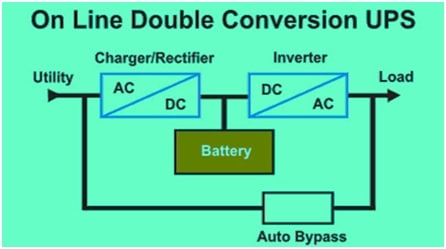
Figure 3 Double conversion UPS
Delta conversion on-line UPS
We have mentioned that the double conversion has some drawback due to the load power is always drawn from the rectifier and inverter which reduces power efficiency. Thus the delta conversion technology is to eliminate those drawbacks.
The UPS components are the same as double conversion, but it has one more element which is delta transformer. This design is available in ranges from 10 KVA up to 1 MVA.
So how delta conversion is better than double conversion, simply assume that your load is 2 KVA, your load will get supply from delta transformer and if suddenly your load has increased up to 3 KVA, then the power flow will be from delta transformer and inverter. Thus not all load power passes through rectifier and inverter and then energy efficiency is improved.
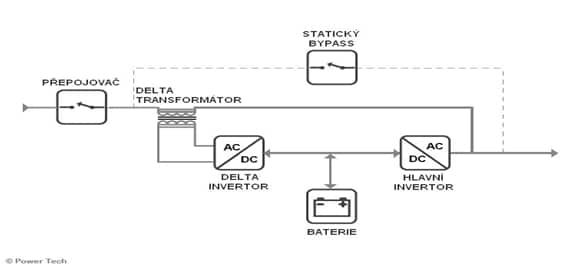
Figure 4 Delta conversion UPS
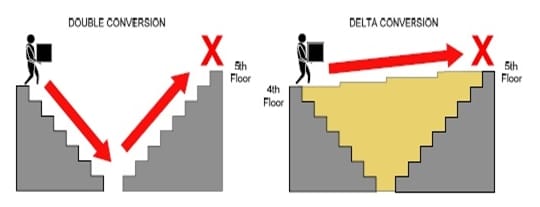
Figure 5 Differences between delta conversion and Double conversion UPS
Types of UPS according to manufacturing
- Conventional or standalone UPS is a compact device which has all its components in one device and scalability is not available in this model, so you buy the device with built in batteries.
- Modular UPS is a more flexible and scalable UPS type as you buy a rack mounted UPS and if your load increaser you can buy more racks. In case a failure of one rack occurs then you can disconnect this one without any discontinuity of services.
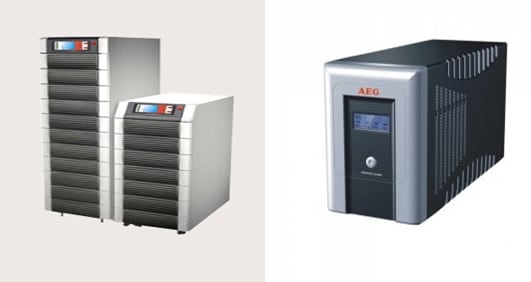
Figure 6 Modular UPS (left), Conventional UPS (right)
You should start by defining your important loads and after considering your needs and which topology is most appropriate for your system, you will calculate your load in KVA and then multiply it by a safety factor of 1.2.
And after this you need to contact with a manufacturer to get your UPS. Y
ou should also consider the backup time which ranges from ten minutes up to 1 hour and an important consideration is for the space you need for the UPS.
Thank you for your attention,
Yasser
Give Yasser your impressions by publishing a coment below.

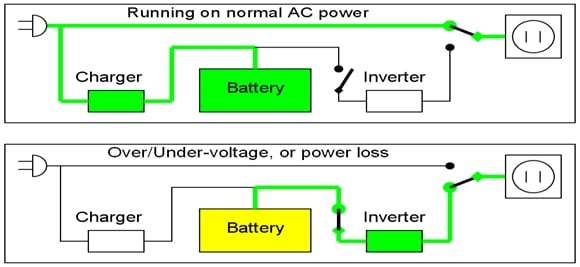
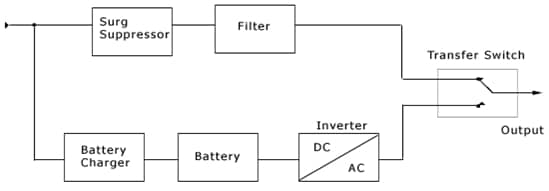
Very Informative about UPS .
Yes it is!